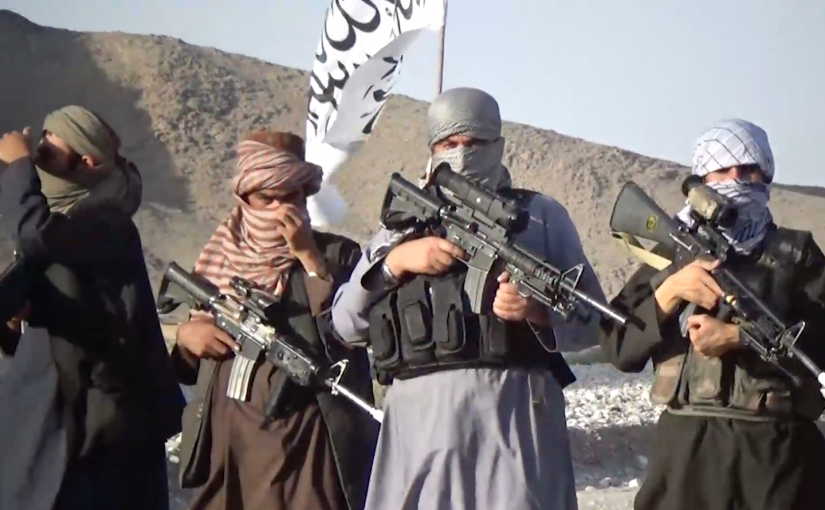New report finds Afghanistan world’s most terror struck country; growing trend of increased female participation in terrorism
The index lists the Taliban as the deadliest terrorist group in the world now, accounting for 38 per cent of all terrorist deaths,

The 2019 Global Terrorism Index, released by the Sydney based Institute of Economics and Peace reported deaths from terrorism fell for the fourth consecutive year, after peaking in 2014. The number of deaths has now decreased by 52% since 2014, falling from 33,555 to 15,952. This fall in deaths was also reflected with 98 countries improving, and 40 deteriorating. This is the highest number of countries to record a year-on-year improvement since 2004. However, the overall impact of terrorism was still higher in 80 countries when compared to five years ago.
The report lists Afghanistan as the least peaceful country, followed by Iraq, Nigeria, Syria, and Pakistan in that order. The five most peaceful countries are Belarus, followed by Guinea-Bissau, Oman, The Gambia, and North Korea.
Amongst its key findings the report lists the Taliban as the deadliest terrorist group in the world now, accounting for 38 per cent of all terrorist deaths, an increase by 71%. For the first time since 2013 the Islamic State of Iraq and Levant (ISIL) was not listed as the most dangerous group.
Terrorism still remains a global security threat with 71 countries recording more than one death – the secondhighest number of countries since 2002.
The death toll for Syria, Somalia and Iraq has decreased substantially in 2018 from the previos year from 1098, 1470, and 4271 to 662, 646, and 1054 respectively but it has almost doubled for Afghanistan from 4653 deaths in 2017 to 7379 in 201, making it the country most impacted by
terrorism.
One of the more worrying trends, the study found, is the surge in far-right political terrorism over the past five years, although the absolute number of far-right attacks remains low when
compared to other forms of terrorism. While Western Europe recorded its lowest number of incidents since 2012, with deaths falling by 70 %, it has witnessed an increase in far-right terrorism, along with North America and Oceania fo the third consecutive year.
The total number of far-right terrorist incidents have increased by 320% over the past five years.
Just under 20% of mass shootings in the US since 1982 were classified as terrorism.
South Asia, the Middle East and North Africa, and subSaharan Africa accounted for 93 per cent of all deaths from terrorism.
Female suicide attacks are still a small percentage of all terrorist attacks, accounting for 5% of suicide attacks from 1985 to 2018. However, the report notes that there has been a growing trend of increased female participation in terrorism, although still a small percentage of all attacks. Between 1985 and 2018 there were 300 suicide attacks involving at least one female. These attacks killed over 3,000 people. The trend has intensified over the past five years, with the number of female suicide attacks increasing 450 per cent between 2013 and 2018. By contrast, male suicide attacks fell 47 per cent over the same period.
Most of this increase can be attributed to Boko Haram, with nearly 80 per cent of all female suicide attacks in the last five years being carried out by the group. This tactic initially led to more lethal attacks, as female suicide bombers were able to evade detection by security forces more easily than male suicide bombers. However, security forces have adapted to this tactic, and as a result female suicide attacks are now less deadly than attacks carried out by their male counterparts.
The research also found that armed conflicts with high levels of terrorism tend to last longer and be more deadly. In conflicts where the primary rebel or insurgent group started as a terrorist group, the average length of the conflict was 33 years, compared to 17 years for conflicts where the insurgents did not start as terrorists. There is also a strong correlation between battle deaths and the number of terrorist attacks where the two increased or decreased in tandem. Terrorist attacks in conflict countries are also three times as lethal as terrorist attacks outside of conflict, and are much more likely to target police and the military. By contrast, terrorist attacks in non-conflict countries disproportionately target tourists, business, and the media.
Another key finding was that the global economic impact of terrorism was US$33 billion in 2018; a substantial decrease of 38% from the previous year.
The report ranked India seventh most terror hit country in the world.